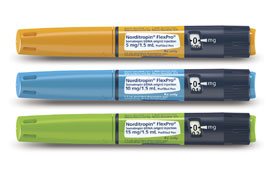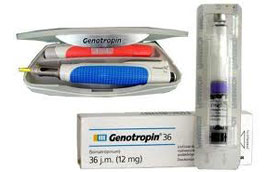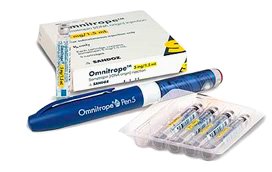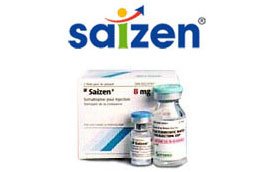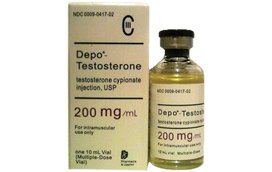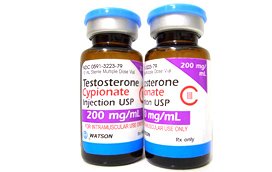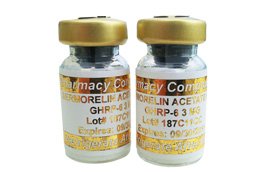Types of Hormones in the Human Body

Thanks to the many types of hormones in the human body, we can move our muscles and bones to propel our bodies, stimulate our brains to process, store, and recall information, deal with stress, influence reproduction and sex drive, aid digestion and metabolism, and a whole lot more.
How many types of hormones are in the human body and what purpose do they all have?
There are 4 Main Hormone Types:
- Amino Acids
- Eicosanoids
- Peptides
- Steroids
These four types of hormones in the human body and their functions will be highlighted during this report – broken down by the gland or organ that produces them or the type category you will find them in. Hormones are essentially chemical messengers that deliver a particular signal to a designated receptor. They also aid in immune functions, glandular secretions, growth, and contraction of cardiac and smooth muscle.
As we also discuss types of hormones in a human body, we find that some are paracrine hormones (acting on neighboring cells) while others are autocrine hormones (acting on the cells that secreted them).
Then there are the major chemical classes of hormones found in the human body including:
- Lipid -soluble hormones – bind to receptors in cells to create action that alters gene expression to form new proteins that alter cell activity
- Nitric Oxide
- Steroids
- Thyroid Hormones
- Water-soluble hormones – activate plasma membrane receptors that alter functions inside the cell
- Amines – epinephrine, melatonin, norepinephrine, serotonin
- Eicosanoids – leukotrienes, prostaglandins
- Glycoproteins, Peptides, and Proteins – ADH, growth hormone, insulin
Amino Acid Hormones
Amino acids are the first types of hormones found in the human body that we will highlight:
| Hormone | Producer | Function |
| Epinephrine (adrenaline) | Adrenal gland | Fight or flight response, blood pressure, heart rate, muscle contraction, respiratory rate, vasodilation |
| Melatonin | Pineal gland | Sleep, circadian rhythm |
| Thyroxine (T4) | Thyroid gland | Regulates metabolism, increases body temperature |
| Triiodothyronine (T3) | Thyroid gland | Cardiac output, heart rate, metabolism |
Eicosanoid Hormones
Eicosanoids are different kinds of hormones in the human body. They do not come from just one gland or organ but are released by cells throughout the body. Eicosanoids often alter production of other hormones.
| Leukotrienes | White blood cells | Help with inflammation, allergy and asthma attacks, and influence function of WBCs |
| Prostacyclin | Endothelium | Vasodilator, platelet activation inhibitor |
| Prostaglandins | Chemical reaction when needed | Inflammation, blood clot formation, blood flow, smooth muscle contraction, glandular secretion, metabolism, labor induction, injury healing, tissue repair |
| Thromboxane | Platelets | Vasoconstriction |
Peptide Hormones
As we look at these different types of hormones in the human body and their functions, we find some of the most well-known associated with the hypothalamus and the pituitary gland.
Hormones of the hypothalamus and the hormone release they stimulate include:
| Hormone | Target Hormone |
| Corticotrophin-releasing hormone (CRH) | Adrenocorticotrophic hormone (ACTH) from anterior pituitary gland |
| Gonadotropin-releasing hormone (GnRH) | Follicle stimulating hormone (FSH) and luteinizing hormone (LH) from anterior pituitary gland |
| Growth hormone-releasing hormone (GHRH) | Growth hormone from anterior pituitary gland |
| Orexin | Increases energy, appetite, wakefulness |
| Somatostatin | Inhibits and prevents growth hormone release |
| Thyrotropin-releasing hormone (TRH) | Thyroid stimulating hormone (TSH) from anterior pituitary gland |
These two hormones are produced in the hypothalamus, but stored and released by the posterior pituitary gland:
- Antidiuretic hormone – ACTH release, water retention in the kidneys, vasoconstriction, blood pressure regulation
- Oxytocin – circadian rhythm, labor contractions, breast milk production
Hormones of the anterior pituitary gland include:
| Hormone | Target Hormone or Function |
| Adrenocorticotropic hormone (ACTH) | Adrenal gland production of cortisol |
| Follicle stimulating hormone (FSH) | Egg and follicle development in female ovaries, testosterone production in male testes |
| Human growth hormone (HGH) | Release of insulin growth factor 1 by the liver, cell division and growth, metabolism, bone, muscle, cartilage, immunity, brain functions, glucose uptake, libido, more |
| Luteinizing hormone (LH) | Female ovulation, estrogen and progesterone production, male testosterone release from testes |
| Melanocyte-stimulating hormone (MSH) | Skin and hair pigmentation |
| Prolactin (PRL) | Stimulates milk production, impacts sexual behavior |
| Thyroid stimulating hormone (TSH) | Thyroid gland release of thyroxine and tri-iodothyronine, promotes release of thyrotropin-releasing hormone (TRH), inhibits growth hormone inhibiting hormone (GHIH) |
In addition to the amino acid hormones mentioned earlier, the thyroid gland also produces calcitonin to help with calcium regulation, bone building, and prevention of bone resorption.
The parathyroid gland provides parathyroid hormone which increases calcium and decreases phosphate in the blood and increases osteoclast number and activity.
The pancreas is both an endocrine and exocrine gland and produces numerous hormones, including:
| Hormone | Function |
| Amylin | Reduces food intake and inhibits digestive secretions |
| Glucagon | Raises levels of blood glucose, stimulates glycogenolysis and gluconeogenesis in the liver |
| Insulin | Lowers blood glucose levels, speeds glycogenesis and lipogenesis, increases amino acid uptake and protein synthesis, slows glycogenolysis and gluconeogenesis |
| Somatostatin | Inhibits release of glucagon and insulin, slows nutrient absorption from gastrointestinal tract |
| Pancreatic polypeptide | Inhibits contraction of gallbladder, somatostatin secretion, and pancreatic digestive enzyme secretion |
| Vasoactive intestinal peptide | Lowers inflammation and blood pressure, glycogenolysis, heart contractility, vasodilation |
The thymus gland produces four hormones that play a role in the maturation of T cells:
- Thymosin
- Thymic humoral factor
- Thymic factor
- Thymopoietin
The following organs also produce various peptide hormones:
- Heart:
- Atrial-natriuretic peptide (atriopeptin) – vasodilator
- Brain natriuretic peptide – dilator
- Kidneys:
- Enkephalin – pain regulation
- Renin – blood pressure regulation
- Liver:
- Angiotensinogen & Angiotensin – release aldosterone, vasoconstriction
- Hepcidin – inhibits export of cellular iron
- Insulin growth factor – cell regeneration, mediates effects of growth hormone
- Stomach:
- Gastrin – gastric acid secretion
- Ghrelin – appetite stimulation
Other peptide hormones come from many other areas of the body, such as tissues, bones, and other organs as follows:
| Hormone | Producer | Function |
| Anti-Mullerian hormone | Testes | Prolactin and TRH inhibitor |
| Adiponectin | Adipose tissue | Lipid and glucose metabolism modulator |
| Cholecystokinin | Duodenum | Digestion aid, appetite reducer |
| Cortistatin | Cerebral cortex | Slow wave sleep |
| Endothelin | Vascular endothelium | Contraction of smooth muscles |
| Galanin | Central nervous system and gastrointestinal tract | Energy homeostasis, water balance |
| Gastric inhibitory polypeptide | Jejunum and duodenum mucosa | Insulin secretion |
| Glucagon-like peptide-1 | Ileum | Insulin synthesis and release |
| Guanylin | Epithelium | Intestinal water and salt transportation regulation |
| Human chorionic gonadotropin | Placenta | Corpus luteum support at start of pregnancy |
| Human placental lactogen | Placenta | Insulin and IGF-1 production, carbohydrate intolerance, insulin resistance |
| Inhibin | Ovaries, testes, fetus | Inhibits production of FSH |
| Leptin | Adipose tissue | Metabolism support and appetite suppression |
| Motilin | Small intestine | Gastric activity |
| Osteocalcin | Bones | Memory formation, muscle function, testosterone synthesis |
| Pituitary adenylate cyclase-activating peptide | Multiple | Neuromodulator and neurotransmitter |
| Relaxin | Corpus luteum, mammary glands, placenta, uterus | Prepares cervix and pelvis ligaments for childbirth |
| Secretin | Duodenum | Pancreatic and liver secretions |
| Thrombopoietin | Kidney, liver, striated muscle | Platelet production |
| Uroguanylin | Renal tissue | Renal water and salt transportation regulation |
Steroid Hormones
When we talk about what types of hormones in the human body are most well-known, people tend to think about steroid hormones. These vital chemical messengers come from the adrenal glands, ovaries, and testes, and some are the likeliest to decline with age.
The adrenal glands produce the following steroid hormones:
| Hormone | Steroid Type | Producer | Effect/Function |
| Aldosterone | Mineralocorticoid | Adrenal cortex | Absorbs excess sodium in kidneys to increase blood volume, blood pressure regulation |
| Androstenedione | Androgen | Adrenal glands, gonads | Steroid hormones, helps with estrogen and testosterone production |
| Cortisol | Glucocorticoid | Adrenal cortex | Regulates inflammation, blood sugar, blood pressure, balance of water and sale, influences memory, the stress hormone |
The different types of hormones in the human body that are estrogen hormones include:
| Hormone | Producer | Function |
| Estradiol | Ovaries, testes, testosterone conversion by aromatase enzyme | Bone resorption inhibition, endometrial and uterine growth, lung functions, blood vessel maintenance, circulation, cortisol, SHBG |
| Estrone | Ovaries | Uncertain |
| Estriol | Placenta | Uncertain, may assist menopause symptoms |
The different types of androgen hormones include:
| Hormone | Producer | Function |
| Dehydroepiandrosterone (DHEA) | Ovaries, testes, kidneys | Estrogen and testosterone precursor |
| Dihydrotestosterone (DHT) | Multiple, testosterone conversion by enzyme 5 alpha reductase | Stimulates male characteristic development |
| Testosterone | Testes, ovaries, adrenal glands | Muscle and bone development and growth, brain functions, hair growth, libido, spermatogenesis |
Progesterone is the only progestogen steroid hormone and comes from the adrenal glands, ovaries, testes, and placenta. It supports nerve and thyroid hormone functions, is a source hormone, pregnancy support, regulates estrogen effects, blood clotting, and is anti-inflammatory.
The final two hormones are secosteroids called Calcitriol and Calcidiol. They come from the skin and proximal tubules of the kidneys and are the active and inactive forms of vitamin D3 respectively.
Unbalanced hormones can create many problems in the body. Please contact Kingsberg HRT Clinic with any questions you have about regulating your hormone levels.













